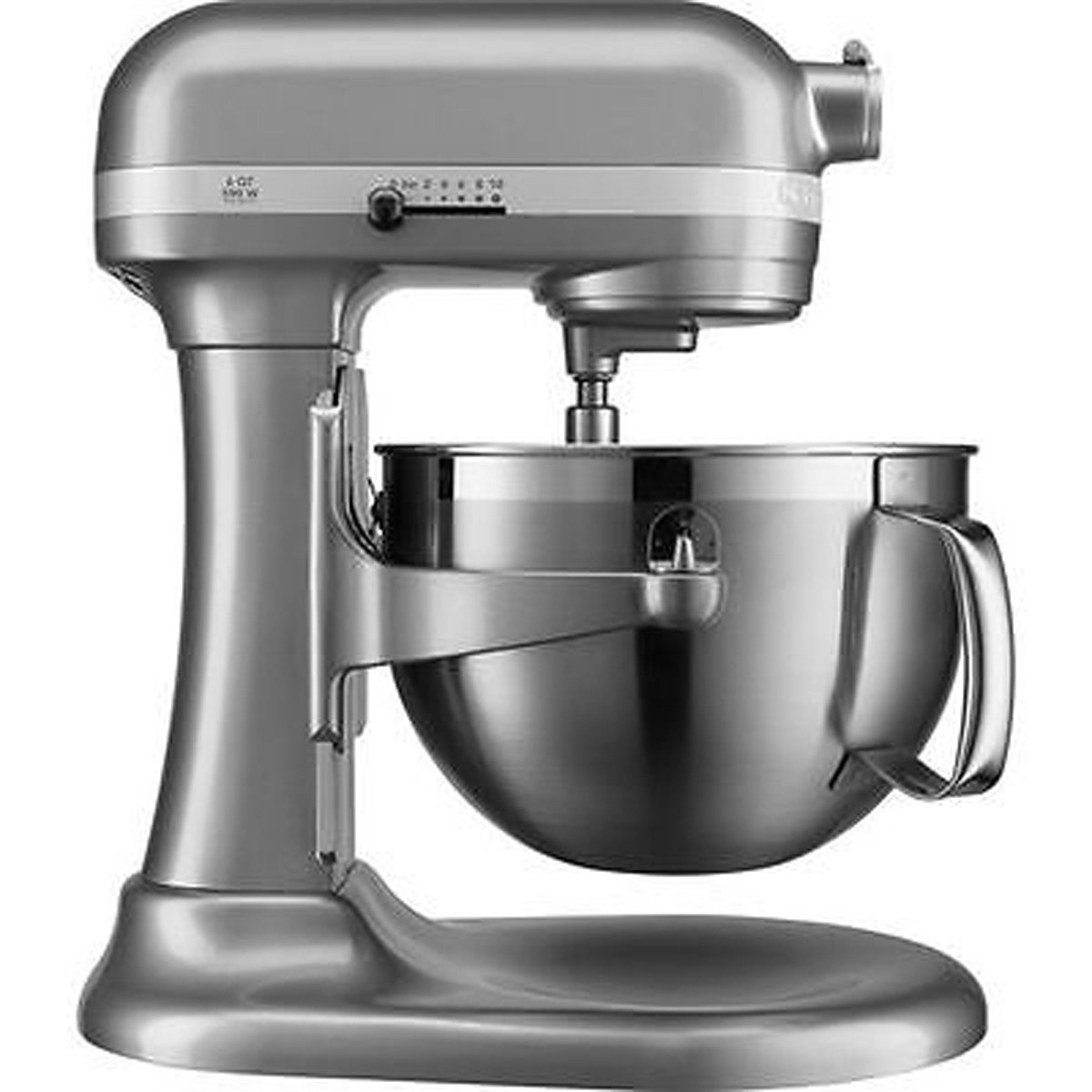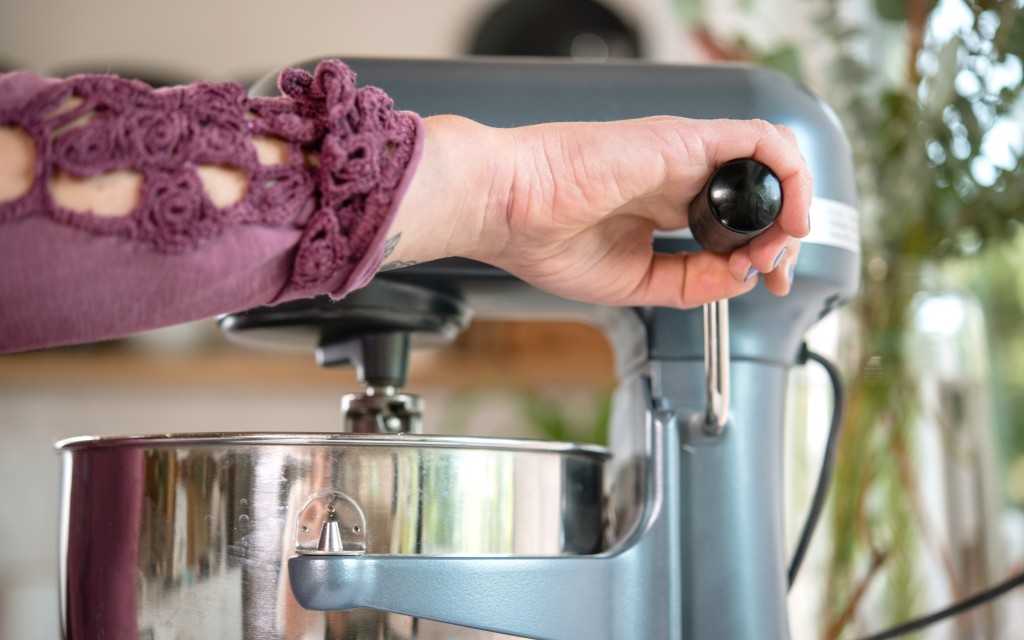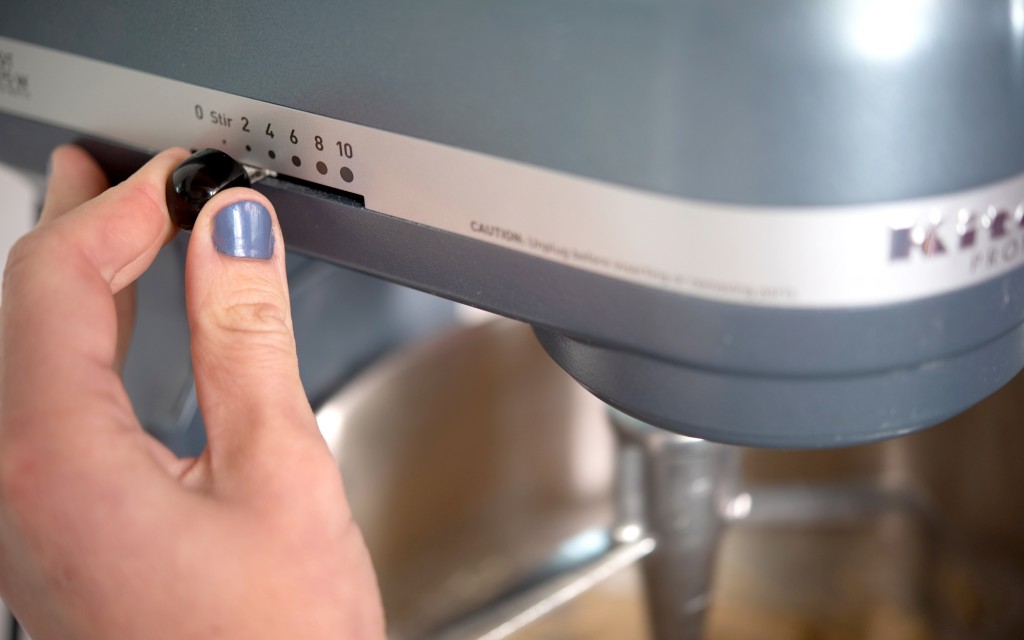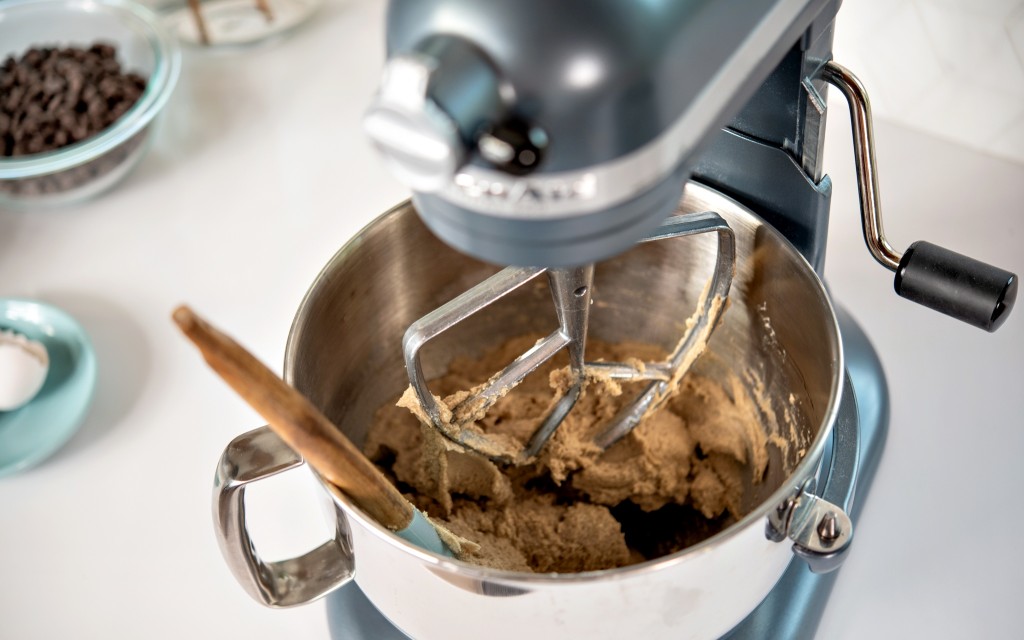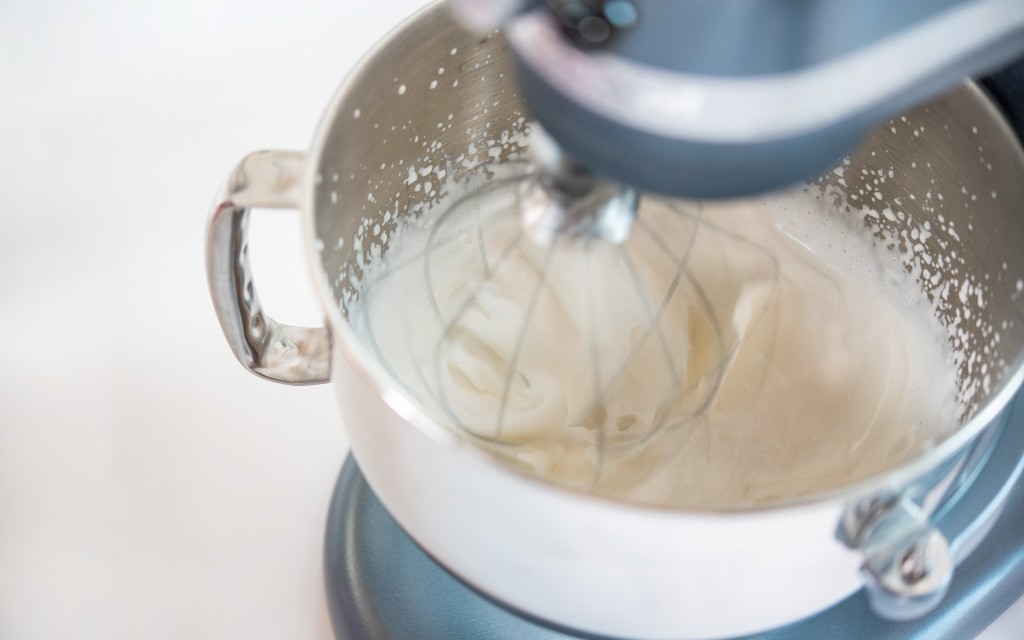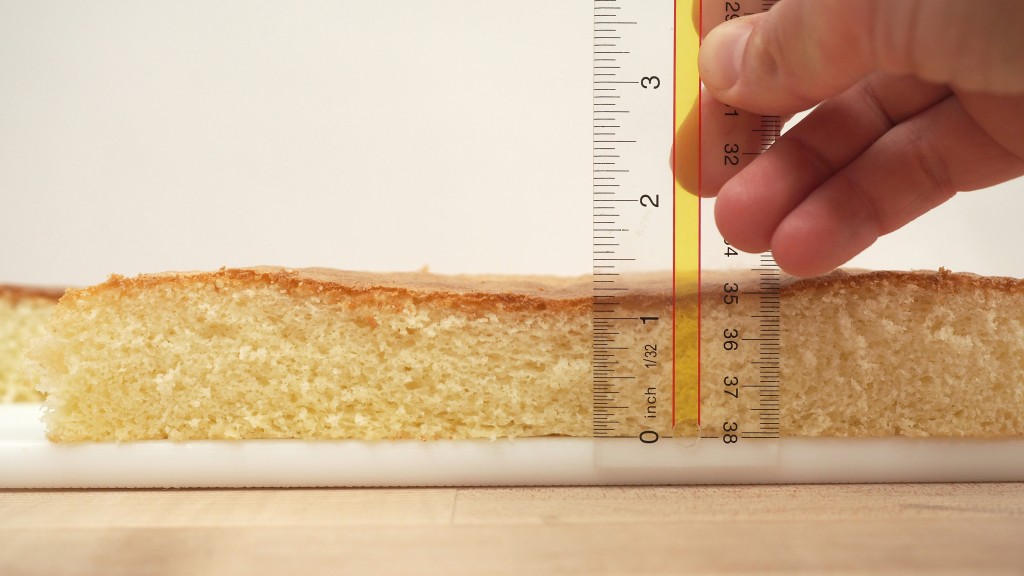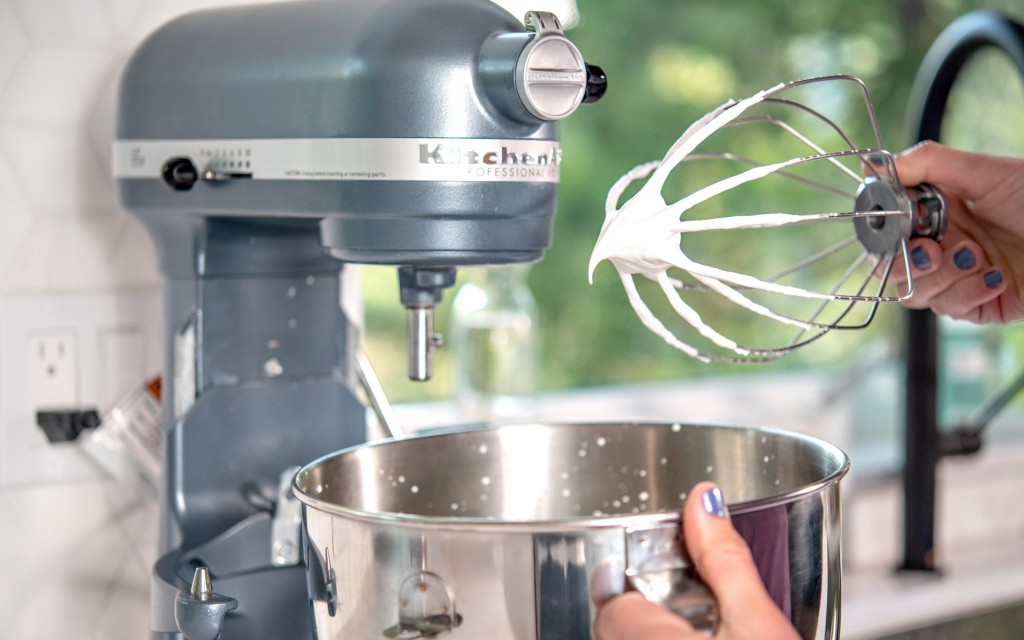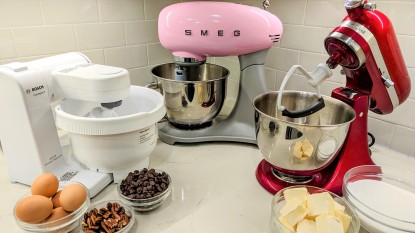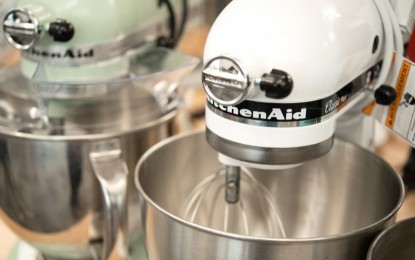KitchenAid 6-Qt. Professional Bowl-Lift Review
Our Verdict
Our Analysis and Test Results
Rarely does a single product shine in every one of our evaluations, but the KitchenAid Professional handily manages this feat. This machine has a large 6-quart bowl that makes double and even triple batches recipes possible — a real boon for production cooking. However, this large size requires the user to help incorporate ingredients that occasionally get stuck on the bottom or pushed to the sides of the bowl. This minor issue is not the result of a lack of power. Our tests revealed a sturdy, robust machine that easily mixed and kneaded the stiffest of doughs while still having the ability to whip cream and mix smooth buttercream frosting neatly. The only caveat to the praise we shower on this marvelous kitchen appliance is that it is likely more machine than most kitchens require.
Performance Comparison
Ease of Use
Stand mixers are a tool that requires time and experimentation to develop the skill set that can take full advantage of the tasks the mixer can perform. While these are not push-button machines like a blender, the process of developing a productive relationship with a stand mixer shouldn't be overly burdensome. Accordingly, the ease of use category analyses the machines' burden on the user. This metric covers a lot of ground in looking at the user interface, sturdiness, user experience, and cleanliness. As such, we weight this metric to 30% of the product's total score.
The Professional has several features that make it pretty darn easy to have an enjoyable and productive experience. First off, the bowl-lift design and the bowl handle make for a somewhat easy bowl placement and removal — though one-handed operation requires more effort than some tilt-head models. The bowl-lift design also reduces spillage when adding while mixing as the bowl-to-head gap can be quickly expanded with the turn of a lever. Additionally, the base of this machine is also super stable, so no worries about having to chase the mixer around the countertop.
Further increasing the ease of use, the Professional employs a slow start-up rotation function that, as the name implies, starts the mixing at a lower speed before ramping it up. Additionally, the model has a splash guard. Both of these features are well received given the 575-watt, 10-speed motor and planetary rotation capable of flinging dough into low-earth orbit. Aside from keeping what you're working on where you want it, these features combine with the smooth finish of the machine to make clean-up as easy as 1-2-3.
The bowl/mixer interface is the only thing that stands in the way of the Professional delivering a perfect performance is the bowl/mixer interface. The bowl-lift crank is limited to two settings, and the all-the-way-up setting leaves a bit of a gap between the bowl and the mixing attachment. This requires the user to scrape the bowl occasionally for unincorporated ingredients to get them into the mix.
Mixing
Mixing is the primary function that a stand mixer performs. Hence, the weight of this metric accounts for 30% of a product's overall score. Mixing at its most basic is simply the uniform incorporation of two or more ingredients. However, this task is more or less difficult, depending on the ingredients being mixed. To test various types of mixing in common recipes, we selected the mixing portions of a cookie, frosting, and pizza dough recipes.
Each of these recipes places unique demands on the motor, mixing attachment, and mixing action of the machine. For example, the cookie recipe calls for chocolate chips, nuts, oats, and coconut flakes to be incorporated into a relatively soft dough that stiffens as these ingredients are added. This puts considerable strain on the mixer motor and the attachment. Accordingly, we pay close attention to the reaction of the mixer — does it slow, stall, or cycle erratically? Also, we analyze whether the ingredients are evenly distributed throughout the dough and if they were pulverized in the process.
The KitchenAid Professional excels at mixing. The buttercream frosting came together quickly in a smooth, even texture, but it did require a little side-of-the-bowl scraping from the user. Additionally, integrating wet and dry ingredients to form pizza dough was straightforward, producing a uniform, slightly sticky ball at the end of the dough hook. These satisfactory results are the product of KitchenAid's burly motor, planetary mixing action, and highly effective attachments.
Whipping
Many home bakers will remember the first time they made a recipe that called for whipping egg whites or cream to stiff peaks. One tester recalls being a bit overwhelmed with this step, and without Youtube at the time, having to call his grandmother for guidance. While there is no substitute for the experience that older bakers can offer, having a tool like a stand mixer at your disposal is a real benefit. Since a good hand-whipping technique is very mechanical and involves a whisk, a stand mixer is a great substitute. However, a stand mixer can easily overdo the process where forearm fatigue can keep one from over-whipping.
While stand mixers are great for whipping, not all mixers are created equal in this regard. To develop a standardized analysis of how well mixers whip, we conducted two tests that evaluate the quality of aeration in both egg whites and cream. The egg whites are whipped until stiff peaks form and are used in the sponge of a lemon chiffon layer cake. When the sponge comes out of the oven, they are allowed to cool, and then their height is measured at the edge and the center. The air trapped in bubbles during the whipping process expands when heated in the oven and causes the batter to rise. Thus, the height of the sponge is a good indicator of how well the egg whites were whipped. The Professional is about average for the class in this evaluation. However, there was very little sagging in the middle of the sponge, which suggests a quality whip.
The other test we run to assess whipping is a volume test. We whip a half cup of cream to stiff peaks for this test, recording the increase in volume and the time it takes to get there. This test tells us how much air was introduced into the medium and gives us an idea of the amount of force going into the effort. Faster is not necessarily better when it comes to whipping. The Professional crushes in this evaluation. It increased the volume of the cream from 1/2 cup to 1 1/4 cups. This volume increase is at the top of the class, while the time it took to get there is about average at 3 mins 12 secs.
Kneading
Kneading dough by hand is a laborious task that a machine can do if that machine has a sufficiently powerful motor and a proper dough hook attachment. The KitchenAid Professional has both. We can confidently say this because we made pizza dough in the machine, and it performed wonderfully. After baking off the dough, the pizza crust was light and airy crumb with a crispy exterior. The crust came out so well because it was worked correctly by the dough hook, and as a result, it rose adequately in the oven.
Without going into a science lesson on fermentation, kneading is important because it makes the dough more elastic. This elasticity is better able to capture the CO2 that is created by the yeast and sugar in the dough. Knowledgeable bakers will object to this simplification of a complex process, but this is basically what's happening. You want the dough to be springy and elastic, and kneading produces this outcome. If the dough lacks in this way, it will not be able to retain the CO2, and it will not rise. This failure produces dense bread that will likely result in feelings of frustration.
As was said above, kneading dough can be hard work, both for humans and machines. However, the 575-watt motor of the Professional lives up to its name. It kneads dough like a pro! As with whipping, however, a machine with this much power can easily overdo it if not watched carefully.
Should You Buy the KitchenAid 6-Qt. Professional Bowl-Lift?
The Professional is a superb machine. It leads in nearly every metric and boasts a larger bowl and a more convenient interface than many peers. However, the machine's price reflects the performance, and it's probably more machine than most home cooks and bakers need. We suggest going with this option if you are thinking of production and you don't mind the cost.
What Other Stand Mixers Should You Consider?
The KitchenAid Artisan Stand Mixer is an award-winning alternative that performs nearly as well in every metric but costs slightly less than the Professional. While we wouldn't describe the Artisan as a steal, one certainly gets what they are paying for with the purchase. But, when you consider that KitchenAid standing mixers are (theoretically) designed to last a lifetime, the initial payout seems less significant. For home bakers working with less space, consider the smaller KitchenAid Artisan Mini, a mini stand mixer built to the same high standards as its larger siblings.


